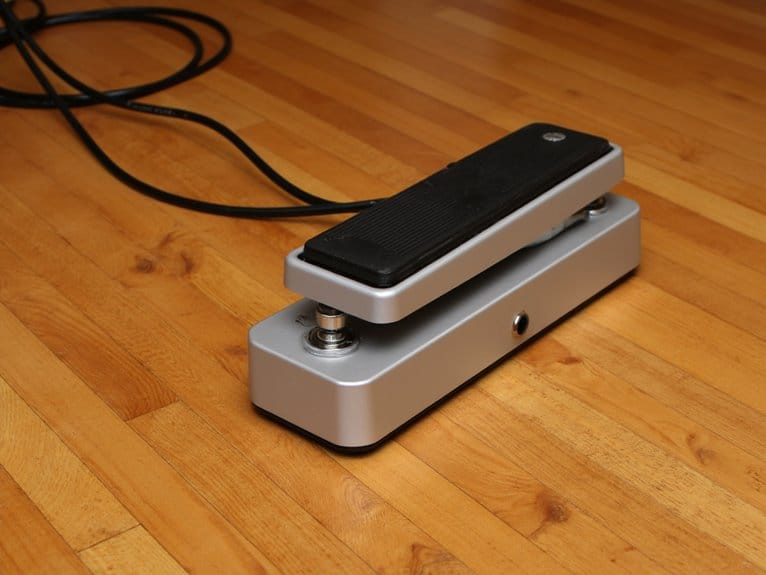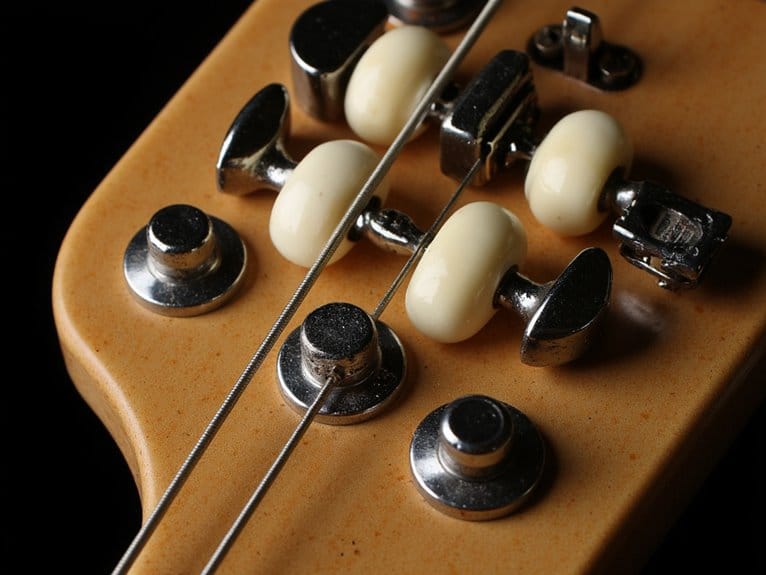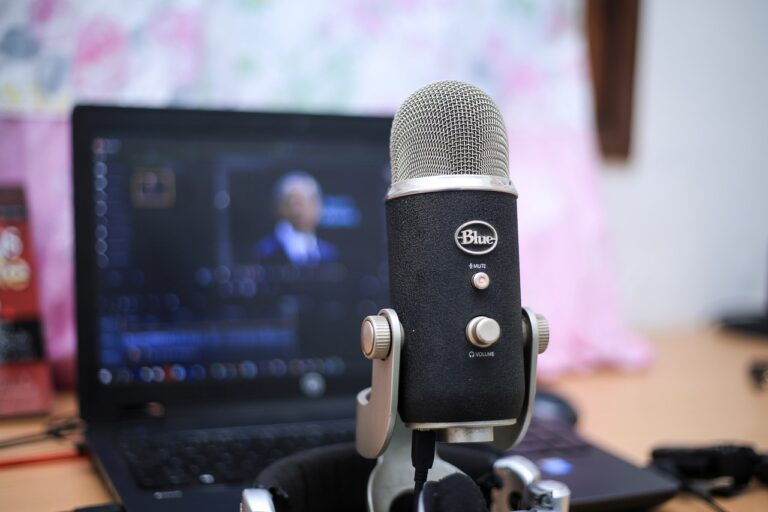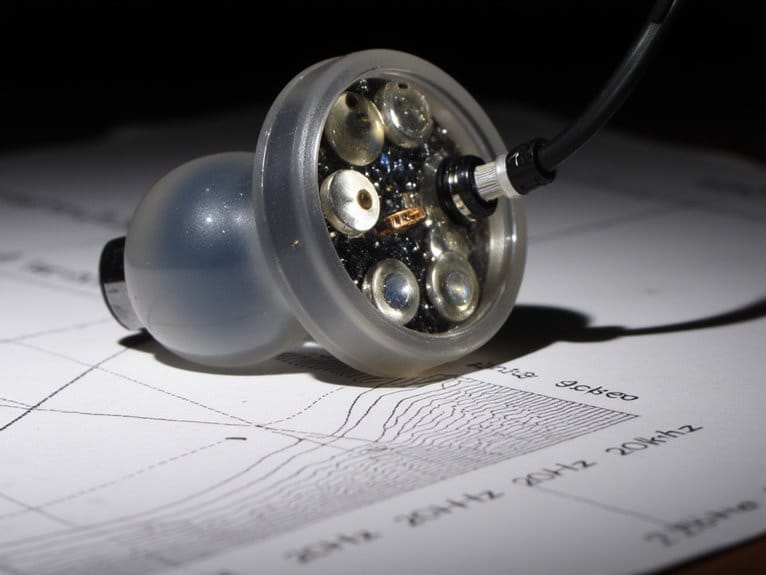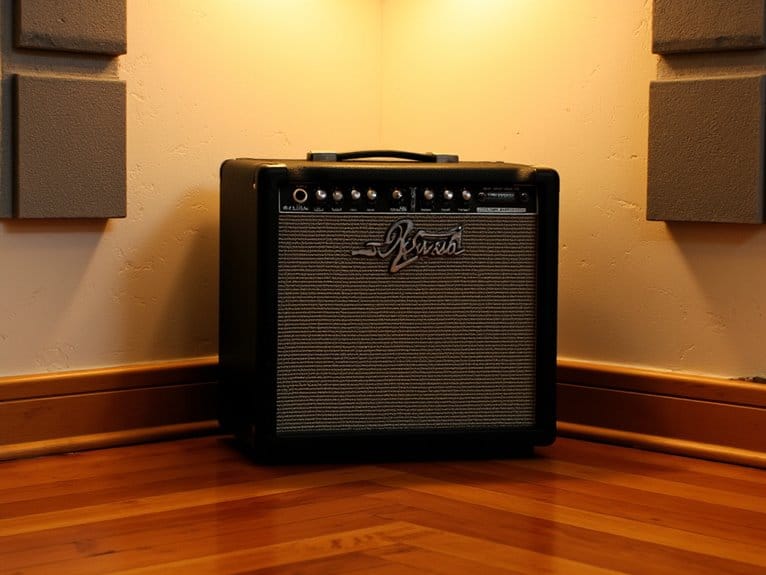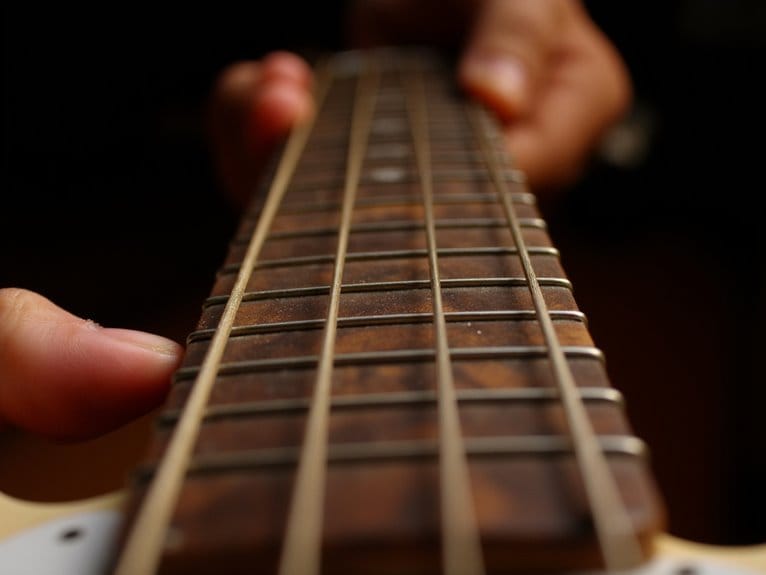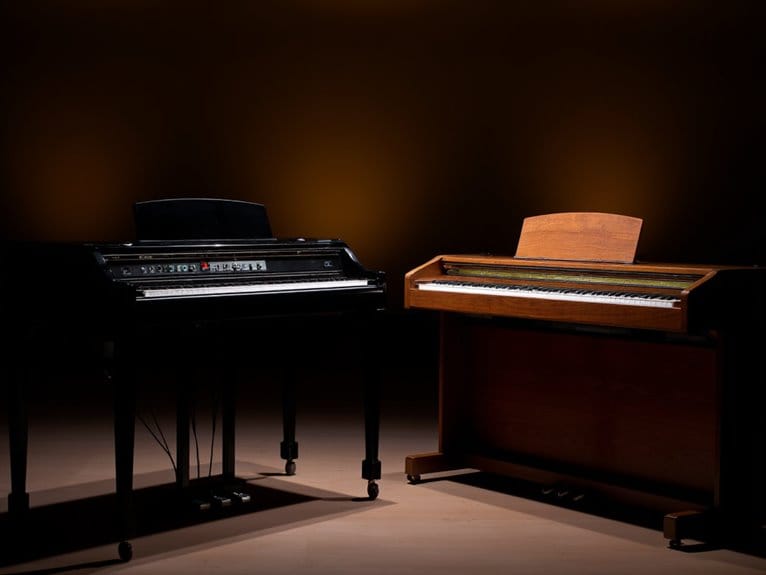Expression Pedals: Adding Real-Time Control
Expression pedals transform your static effects into dynamic, responsive instruments by controlling potentiometers that send continuous voltage signals, converting analog input into MIDI CC values from 0-127 for real-time parameter manipulation. You’ll gain precise control over tremolo depth, chorus intensity, EQ curves, and multiple effect parameters simultaneously, breathing life into soundscapes that evolve with your musical phrasing. These rocker-style controllers integrate seamlessly with modern multi-effects units and MIDI systems, though choosing between passive and CV models requires understanding your gear’s compatibility requirements and performance goals. Exploring individual pedal setup benefits and drawbacks can help you tailor your rig to your unique playing style. Active and passive expression pedals each offer distinct characteristics that can influence your sound and performance dynamics. By carefully evaluating these factors, you can maximize your setup’s potential and achieve the expressive nuances that define your music.
We are supported by our audience. When you purchase through links on our site, we may earn an affiliate commission, at no extra cost for you. Learn more.
Notable Insights
- Expression pedals use potentiometers to generate smooth, continuous control signals for real-time manipulation of effects and MIDI parameters.
- They enable dynamic adjustment of tremolo depth, chorus intensity, EQ settings, and multiple parameters simultaneously during live performances.
- Modern integration allows expression pedals to control multi-effects units, MIDI systems, lighting, and samplers through control voltage connections.
- Choose between passive and CV models based on compatibility needs, build quality preferences, and budget considerations for your setup.
- Real-time control transforms static effects into evolving textures, compensates for room acoustics, and enhances overall performance workflow flexibility.
Understanding How Expression Pedals Work
When you press down on an expression pedal with your foot, you’re fundamentally controlling a potentiometer inside the unit that varies its electrical resistance based on the pedal’s position, creating a smooth, continuous signal that communicates with your effects or MIDI devices.
The pedal mechanics involve a rocker mechanism connected to this potentiometer, which typically rotates 270 to 320 degrees to match your foot’s movement range. Your connected device sends control voltage through one conductor, and the pedal’s potentiometer modulates this signal before returning it through another conductor.
This voltage modulation creates a proportional relationship between your foot position and the effect parameters, with most devices converting the analog signal into MIDI CC values from 0 to 127 for precise parameter control.
Creative Applications for Dynamic Sound Control
While basic volume and wah control represent just the tip of the iceberg, I’ve discovered that expression pedals truly shine when you start exploring their creative applications for dynamic sound control. From adjusting the gain levels on your favorite overdrive to morphing tone characteristics in real time, the possibilities are endless. Many musicians find that incorporating expression pedals not only enhances their setup but also elevates their sound to new heights, especially when paired with the top 10 overdrive pedals. This synergy allows for unique sonic textures that can transform a conventional performance into a captivating auditory experience.
Through expressive modulation, you can transform static effects into living, breathing textures that respond to your playing intensity and musical phrasing.
Expression pedals breathe life into your effects, creating dynamic textures that pulse and evolve with your musical performance.
Here’s where expression pedals excel in creative applications:
- Real-time tremolo and chorus depth adjustment creates evolving soundscapes that shift from subtle movement to intense, swirling textures
- Dynamic EQ control lets you boost midrange frequencies for solos or cut them for rhythm sections without preset changes
- Multi-parameter modulation simultaneously controls delay feedback, reverb mix, and filter sweep for complex, organic sound evolution
These capabilities enable you to craft unique sonic shifts, compensate for room acoustics during live performances, and achieve fluid musical expression that static effects simply can’t provide.
Many modern multi-effects processors like the Zoom G1X FOUR include built-in expression pedals that provide real-time control over multiple parameters simultaneously. The tap tempo function on modulation pedals allows you to synchronize effect rates with your song’s rhythm for perfectly timed musical expression. Additionally, a good looper pedal can enhance your performances by allowing you to layer sounds and create complex musical textures in real-time. With the combination of a multi-effects processor and a looper, musicians can experiment with different soundscapes and build captivating arrangements on the fly. This level of creativity opens up new possibilities for songwriting and live performances, making it easier to express unique musical ideas.
Choosing the Right Expression Pedal for Your Setup
How do you navigate the surprisingly complex landscape of expression pedal options without getting overwhelmed by technical specifications and marketing claims?
I’ve found that understanding the fundamental pedal types simplifies the decision considerably, since passive models work with most guitar effects while CV pedals serve synthesizer applications specifically.
Your user preferences regarding build quality matter greatly-metal casings withstand rigorous live use, though lightweight plastic designs reduce pedalboard weight for touring musicians who prioritize portability over absolute durability. For those who frequently collaborate in live settings, a pedal that maintains its integrity while traveling is essential. Additionally, understanding rhythm guitar’s role within the band can influence the choice of effects and their settings, ensuring that the overall sound remains cohesive. Ultimately, striking a balance between build quality and portability can enhance the musicianship and performance experience.
Consider compatibility features like polarity switches and output level controls, which guarantee your chosen pedal integrates seamlessly with existing gear rather than requiring expensive adapters or modifications.
Budget determines whether you’ll opt for reliable entry-level options like the M-Audio EX-P or invest in professional-grade models from Mission Engineering.
Integration With Modern Effects and MIDI Systems
Since I’ve watched countless guitarists struggle with expression pedal integration, I can tell you that modern effects processors have transformed these simple potentiometer-based controllers into sophisticated command centers for real-time parameter manipulation.
When you connect your expression pedal to contemporary multi-effects units, you’re accessing control voltage systems that translate your foot movements into precise MIDI messaging, enabling seamless integration with DAWs and MIDI-capable devices.
Here’s what makes modern integration so powerful:
- Multi-parameter control – simultaneously adjust delay feedback, wet/dry mix, and filter resonance across multiple effects
- MIDI synchronization – coordinate expression changes with lighting systems, samplers, and other MIDI-triggered events
- Preset storage – save and recall expression pedal assignments for efficient performance workflows
This expanded connectivity transforms your expression pedal from a simple effect modifier into a thorough performance tool.
On a final note
You’ve now got the foundation to transform your static pedalboard into a dynamic, expressive instrument that responds to your every movement. Whether you’re sweeping filter frequencies, controlling reverb decay times, or manipulating MIDI parameters in real-time, expression pedals unveil creative possibilities that finger controls simply can’t match. Start with one pedal, experiment with different effects, and you’ll quickly discover why so many guitarists consider expression control absolutely essential.

